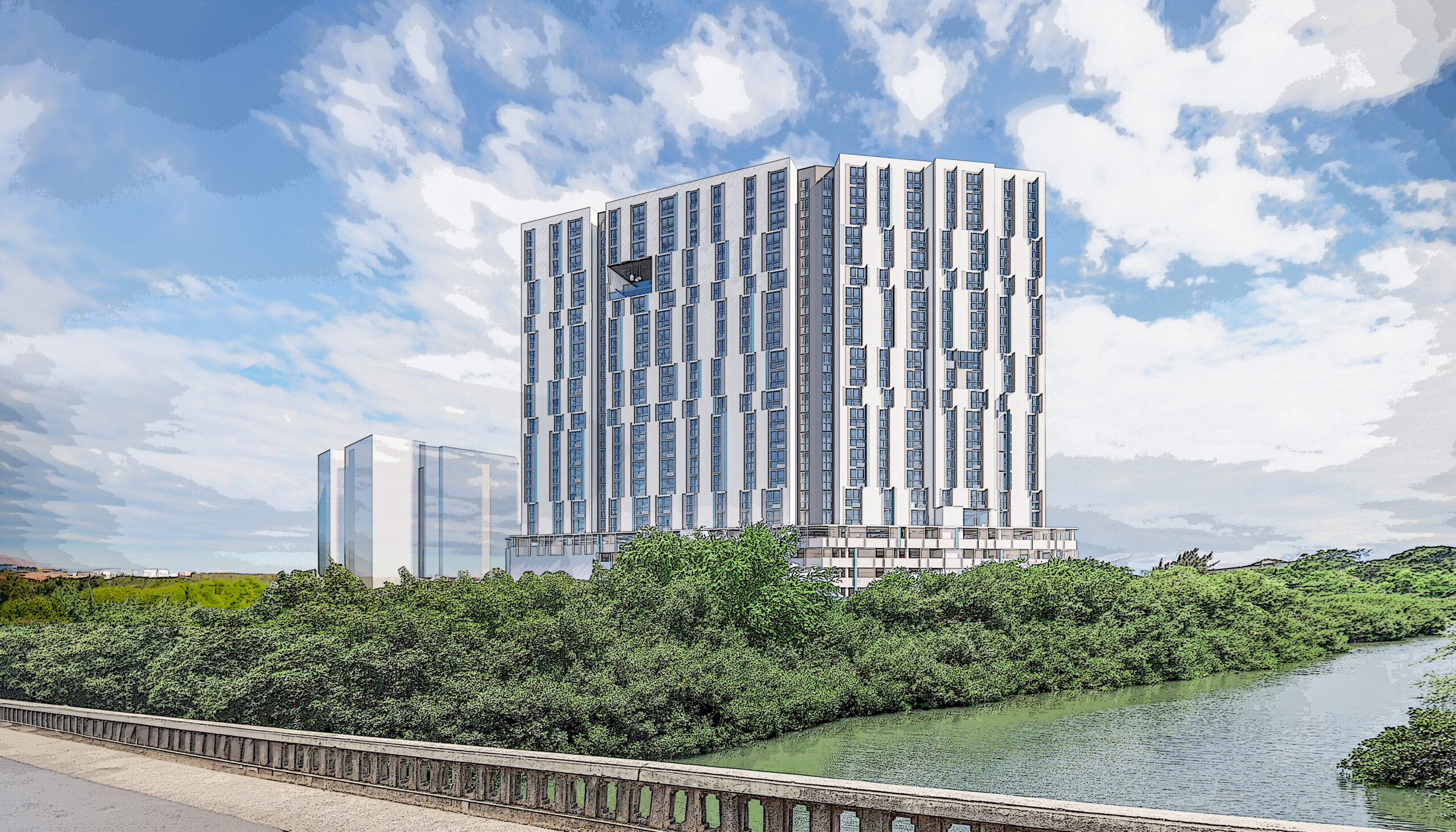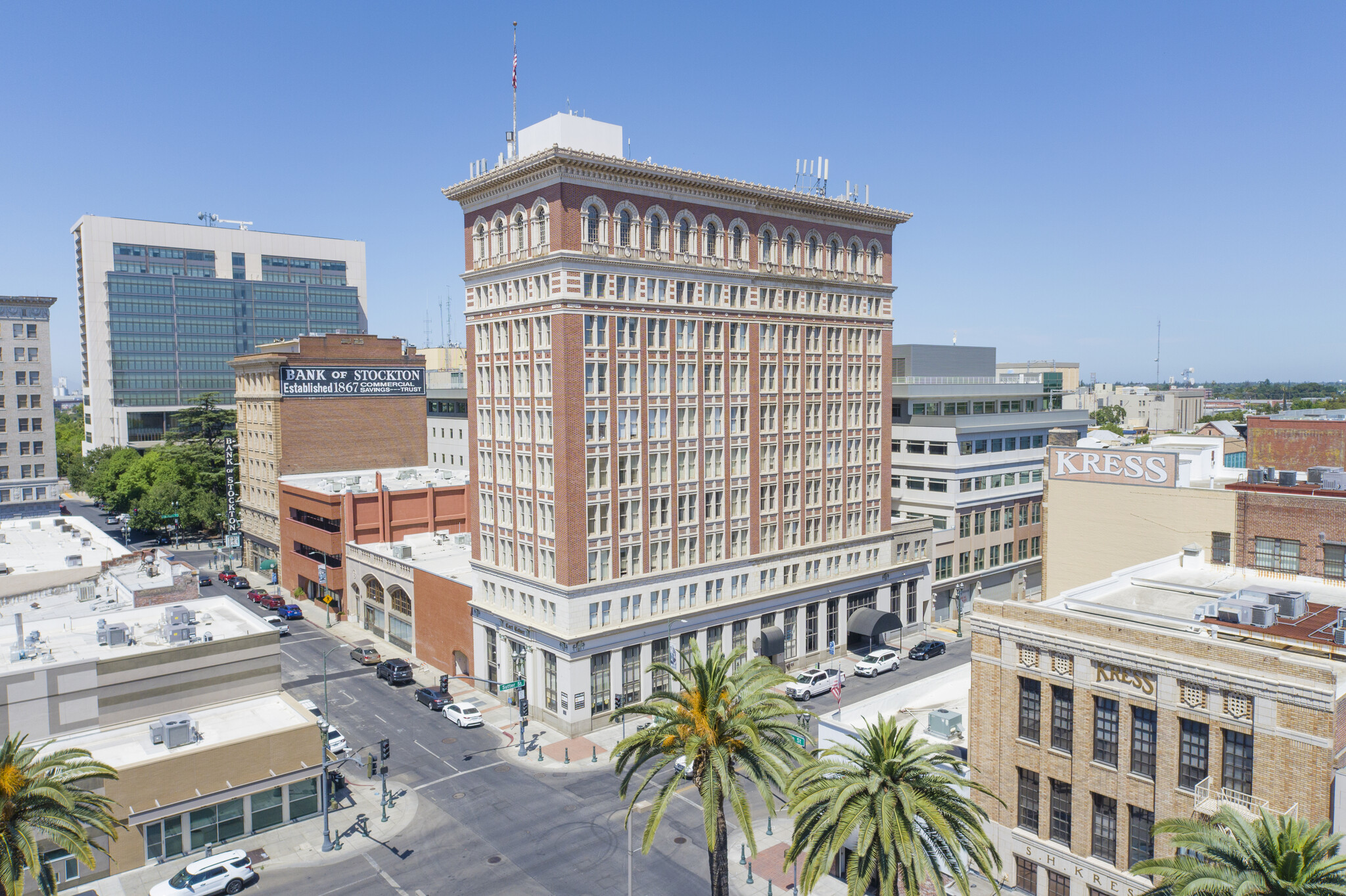HONOLULU, Hawai‘i, July 5, 2023 – In partnership with Pacific Development Group (PDG) and Hunt Development Group (HDG), Hunt Capital Partners (HCP) announced the closing of $68.9 million in Federal Low-Income Housing Tax Credit (LIHTC) equity and $24.4 million in State LIHTC equity financing for a high-rise development overlooking Pearl Harbor. This project, known as Hālawa View II, will add 302 new affordable homes to the existing community located on the island of O’ahu.
Hālawa View II will provide additional housing options for low-income families earning up to 30, 40, 50, and 60 percent of the area median income. The new homes will complement the existing Phase I of Hālawa View, which offers 121 units and includes a 14-story high-rise building and two, three-story buildings. Phase I was originally built in 1972 and renovated in 2012 with LIHTCs syndicated by HCP.
Hālawa View II is the result of a successful collaboration between the State of Hawai‘i, the City and County of Honolulu, PDG, HDG, and HCP. This initiative aims to address the urgent need for more affordable housing in Honolulu, where housing costs are 214% higher than the national average according to a recent PayScale report.
This project’s 302 units will include 36 studio, 114 one-, 138 two- and 14 four-bedroom units in an 18-story high-rise atop a 7-story podium parking garage with 454 parking stalls. Notably, five units will be designated for chronically homeless individuals or those in public support services with referrals provided by U.S. Vets; additional service coordination will be available to them by the referral agency at no cost.
“We’re thrilled to help Pacific Development Group bring to fruition its vision to efficiently develop a portion of the underutilized parking on the Hālawa View site to help address the need for affordable housing in Honolulu,” said Dana Mayo, executive managing director of HCP. “Honolulu has such a dire need for affordable housing and has severe traffic congestion. This development will help alleviate both issues by providing residents with affordable rents and walking access to Honolulu’s new rail line, enabling residents to reach many neighborhoods around the city with ease.”
Residents at Hālawa View II will benefit from a range of amenities, such as a community room, exercise facility, playground, and central laundry facilities. Security features will include video surveillance and perimeter fencing. The building will also incorporate energy-efficient fixtures in each unit, in addition to electric vehicle charging stations, low-flow plumbing, and low-water landscaping.
The prime location of the 3.11-acre Hālawa View II site between Aloha Stadium and Arizona Memorial offers convenient access to Honolulu’s new rail line, alleviating traffic congestion and enabling residents to explore different neighborhoods with ease. Additionally, the outdoor plaza, overlooking Hālawa Stream, will provide barbecue and picnic areas, as well as stunning displays of public art.
“This closing represents an initial vision and years of planning and collaboration with the community and stakeholders,” said Joe Michael, president of PDG. “We hope this project will be a catalyst to transform the area into a vibrant community near Arizona Memorial and Aloha Stadium that aligns with the Hālawa Area TOD Plan developed by the City and County of Honolulu.”
The long-awaited Hālawa View II project is a collaboration involving Pacific Development Group as the project’s developer and administrative general partner; Hawaiian Community Development Board as managing general partner; Hawai‘i Assisted Housing, Inc. as special managing general partner; Hunt Development Group as special limited partner; and Mark Development, Inc. as special general partner and property manager. Nordic PCL will serve as the general contractor; AHL as the architect and Group Pacific as construction manager.
The total development cost for Hālawa View II is $168.1 million. Hunt Capital Partners facilitated the Federal LIHTCs through its proprietary fund, Hunt Capital Partners Tax Credit Fund 40, with JPMorgan Chase and will place the State LIHTCs through various funds with local investors. Construction financing included an $80.2 million tax-exempt loan and a $12.3 million taxable loan provided by the Bank of Hawai‘i with participation from American Savings Bank and Central Pacific Bank. Permanent tax-exempt financing will be provided by Bank of Hawai‘i in the amount of $24.6 million. Additional soft financing included a $42.3 million Rental Housing Revolving Fund loan from Hawai‘i Housing Finance and Development Corporation and a $5 million loan from the City and County of Honolulu’s Affordable Housing Fund, which will be lent to the partnership through Hawai‘i Assisted Housing.
“After working to bring this project to fruition for so many years, we are thrilled to be closer to putting more local families into such quality homes,” said Sharon Gi, vice president of HDG, a division of Hunt Companies. “Given the longstanding shortage of affordable housing in Hawai‘i, there is an overwhelming need for this type of rental project, especially in such a centrally located part of the island.”
This groundbreaking project is set to transform the area into a thriving community, aligning with the Hālawa Area TOD Plan developed by the City and County of Honolulu. The completion date is scheduled for the summer of 2025, bringing hope to local families in need of quality homes.
Environmental Social and Corporate Governance (“ESG”) Investing
Hunt Capital Partners recognizes that its institutional investors are seeking to increase the social value of their investments to help further their ESG initiatives. An investment in affordable housing not only improves the living conditions of its residents, but it also helps to remove obstacles that stand in the way of creating a healthy, safe and stable home environment for low-income families and seniors. When families spend less on housing related expenses, they have more resources available for other essentials such as food and clothing, or even extracurricular activities and educational programs. One of the most significant benefits to providing quality affordable housing is an increase in an individual’s physical and mental health. Hunt Capital Partners’ affordable housing investments create a lasting effect on the people and communities they serve for generations to come.
About Hunt Capital Partners
Hunt Capital Partners (HCP) is the tax credit syndication division of Hunt Companies, Inc. (Hunt). HCP specializes in the sponsorship of Federal and State Low-Income Housing, Historic, and Solar Tax Credit Investments funds. Since its inception in 2010, HCP has raised over $3 billion in tax credit equity in over 48 proprietary and multi-investor funds. HCP manages almost 760 project partnerships representing over 75,000 homes in 48 states and territories. Founded in 1947, Hunt is a privately held company that invests in businesses focused in the real estate and infrastructure markets. The activities of Hunt’s affiliates and investors include investment management, asset management, property management, development, construction, consulting and advisory. For more information on HCP, please visit www.huntcapitalpartners.com, or for Hunt, please visit www.huntcompanies.com.
About Pacific Development Group
Pacific Development Group, Inc. (PDG) is a privately held California firm that was created in 2009 as a rebranding of Professional Apartment Management, Inc. (PAM). PDG and PAM have been family owned and operated since PAM was founded by J.D. Michael in 1969. The company is now under third-generation ownership and has created over 3,800 affordable housing units in Hawai’i and across the Pacific Western United States. For more information, please visit www.pacificdg.com.
About Hunt Development Group Hawai‘i
With over 30 years of service in Hawai‘i, Hunt Development Group is recognized for its innovative use of underutilized government properties, its commitment to creating premier master-planned communities, a dedication to sound environmental, social and governance standards, and respect for the cultural and geographical riches of the Hawaiian Islands. Locally, Hunt is responsible for the development, revitalization and asset management of more than 500 entitled acres and four million square-feet of industrial, commercial and yard space. Current projects include the University of Hawai‘i Residences for Innovative Student Entrepreneurs (RISE) in Mānoa; the Daniel Kahikina Akaka Department of Veterans Affairs Community-Based Outpatient Clinic in Kalaeloa; and ‘Āhuimanu, a neighborhood retail center on the North Shore of Kaua‘i.
###
MEDIA CONTACT
Kevin Friedman
Maize Marketing
kevin@maizemarketing.com
Cris Pinedo
Hunt Capital Partners
cris.pinedo@huntcompanies.com
Carolyn Baker
Hunt Companies, Inc.
carolyn.baker@huntcompanies.com










